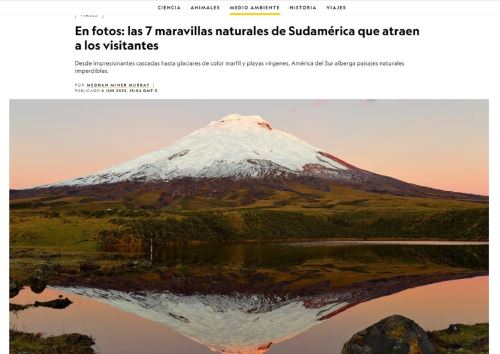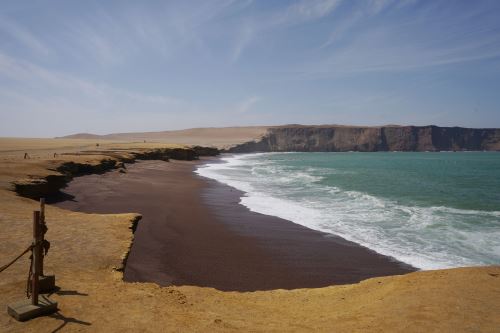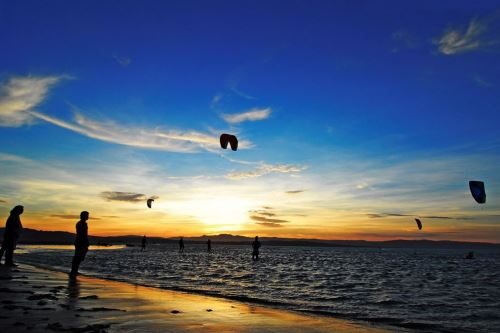South America is home to areas of incredible landscapes worthy of paradise —from imposing glaciers and Edenic lakes to impressive waterfalls and beaches with a marvelous blend of sea and sand. These are settings worthy of being considered wonders of the world.
Seduced by the beauty of these natural landscapes, National Geographic (Nat Geo) website selected the seven natural wonders of South America, all of which share the power to captivate visitors.

What are they? Where are they located? Is there a Peruvian attraction on that privileged list? We’ll tell you here.
The exclusive list of seven natural wonders of South America includes: a glacier located in Argentine Patagonia, the impressive Angel Falls in Venezuela, the Rumiñahui Volcano in Ecuador, the Lençóis Maranhenses Dunes in Brazil, the Island of the Sun in Bolivia, and the humid forest of the Brownsberg Nature Reserve in Suriname.
What attraction from Peru is on the list?
The Spanish edition of National Geographic chose Playa Roja (Red Beach), a unique and impressive beach located within the Paracas Nature Reserve, in Pisco province, Ica region.
The publication highlights the setting surrounding Playa Roja as the place where "the subtropical desert meets the cold southern coast of Peru, and the bluish-green waters of the South Pacific crash against the Red Beach."

It states that "this striking combination of complementary colors was made possible thanks to thousands of years of waves crashing against the nearby Punta Santa Maria massif, gradually turning its pink granodiorite rock into sand."
"Furthermore, thanks to the Humboldt Current, which brings nutrient-rich waters along the coast, the colorful shoreline is also a hotspot of life where orcas, sharks, schools of fish, otters, sea lions, and around 225 species of migratory birds thrive," it emphasizes.
What causes this color?
The reddish hue of the shore gives the place a unique beauty. This color is due to its proximity to the Punta Santa Maria massif, formed by volcanic rocks containing solidified magma.
The action of the waves on the massif drags the reddish rock fragments that accumulate on the shore, thus giving origin to the name of this beach.
These volcanic rocks, which originated long ago from activity on the ocean floor, break down over time due to the wave impact and accumulate on the shore.
That reddish tone contrasts with the blue of the sea and the golden color of the nearby hills, creating a unique visual effect on the continent.

(END) MAO/JMP/MVB
Published: 6/30/2025